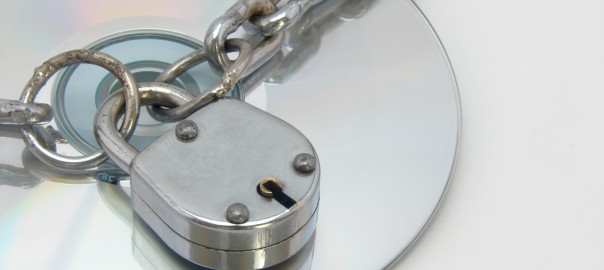Introduction
In the last few years Australia has developed something of a reputation as a world leader. In online copyright infringement that is. Despite having been one of the first countries to implement copyright reforms to provide for online protection – particularly through the implementation of the right of communication to the public – more recently the country has become a leader in allowing users to infringe those laws. And doing nothing about it.
In June 2014 the Attorney General called for an end to what was described as “a golden era for online piracy in Australia” describing Australia as the “worst offender of any country in the world”.[1] This remarkable turnaround from leader to laggard has been an embarrassment for a country with one of the best track records of law and order and has become very internationally visible through its Chairing of the UN Security Council.
This level of copyright infringement does not benefit anyone. Rightsholders are obviously affected. So are ISPs. As new online movie and TV streaming services arrive in Australia, they provide revenue opportunities for ISPs that partner with the services that would be seriously eroded by the competitive pressure of free infringing content that is readily available from pirate websites and services. Besides, why should some consumers do the right thing while others take without paying?
After a period of lack of political will to address the problem under previous governments, the new Attorney General has recognised that action is needed. He announced on 30 July 2014 that the new government would take steps to deal with the problem in a coordinated way.[2] There was a decided lack of opposition to the announcement from quarters that have previously resisted change.
The Attorney General and the Minister for Communications jointly issued a Discussion Paper that canvassed a number of options for copyright reform.[3] These proposals included changes to the authorisation liability provisions, the introduction of a no-fault site blocking regime similar to that operating in the UK and Europe and the possible extension of safe harbour laws. The Discussion Paper drew a wide range of responses from stakeholders. And one thing was clear: there was no serious debate that there was a problem that needed to be addressed and that it could be ignored no longer.
While it is not clear what if anything will happen with the safe harbour regime, there is more concrete action taking place in relation to the site blocking and authorisation proposals. It is the developments in these areas that this article will consider.
Site blocking
The introduction of site blocking legislation appears to be in progress. On 10 December 2014 the Attorney General and the Minister for Communications jointly announced that the government would be introducing laws for site blocking.
The Government will also amend the Copyright Act, to enable rights holders to apply for a court order requiring ISPs to block access to a website, operated outside of Australia, which provides access to infringing content.
Although no details of the site blocking proposal have yet been provided, some guidance was given in the Discussion Paper.
The Discussion Paper had proposed that a site blocking scheme closely following the form of s 97A of the Copyright Designs and Patents Act UK 1988 could be introduced. That provision has become a driver of impressive copyright enforcement action taken in the UK to cut off the means of access to notorious pirate websites. All without having to establish fault on the part of ISPs who carry the transmissions of their subscribers when accessing the pirate sites. Site blocking has an impressive record, with almost 40 websites having been blocked by the orders of the High Court. Early opposition from ISPs have given way to a more cooperative approach, with ISPs regularly consenting to such orders.
The jurisprudence has also become more sophisticated. Over time it has considered a range of issues, such as the degree of specificity of the injunctions, the proportionality between the orders and the identified infringing activity generated by the websites, the effectiveness of the orders, cost burden and other issues such as the interaction, if any, with human rights laws. The recent decision in Cartier v Sky [2014] suggests that site blocking has a great deal more potential than first thought, with Arnold J ordering site blocking to protect brand owners without relying on the copyright specific s 97A.
Is Australia ready for site blocking? There is a strong case for saying so. The provision would be consistent with the intent of the original update of copyright laws in 2000 to address the emergence of the internet. The then Attorney General described the intent of the laws as putting Australia “at the cutting edge of online copyright reform” and placing “Australia among the leaders in international developments in this area.” Site blocking would certainly do this. It would also be consistent with the general obligation on Australia under Art 41(1) of TRIPS[4] to ensure that it provides “effective action” against infringement of IPR.
The legal framework is also ready for site blocking legislation. Site blocking has been a recognised remedy under Australian Copyright law since the introduction of the safe harbour regime that was substantially imported from the US DMCA (which also provided for site blocking as a remedy) through the US Australia Free Trade Agreement signed in 2005.[5] The power to issue that form of site blocking order has never been exercised because no ISP has been able to successfully invoke the safe harbour defences that would trigger the availability of that remedy. The existing Copyright Act could accommodate an s 97A style provision, thereby carving out of existing fault based regime a new statutory basis for blocking orders, although it would probably be appropriate that the final form omit the references to ISP knowledge as the equivalent Irish laws have done.
Acceptance from stakeholders and the public is a key consideration, particularly with the fragmentation of power in the Senate due to minor parties. By this measure, there appears to be general acceptance that it is the least objectionable strategy for responding to online infringement. This is because it seeks to address the sources of infringement rather than the infringing users or the intermediaries. It is difficult to raise any sensible argument that Court supervised targeted site blocking limits the legitimate rights of internet users.
Authorisation liability
This leaves the issue of authorisation liability. This area of liability has been left in a state of paralysis following the decision of the High Court of Australia in the Roadshow Films v iiNet case in 2012.[6] Despite strong indications of an expectation that ISPs would take action when aware of internet infringements by users (in the explanatory documents of the government when the current regime was implemented in 2000), the Court found that an ISP with such knowledge was not obliged to act.
Attempts before and since the iiNet decision by rightsholders and ISPs to agree on an industry code of action to respond to copyright infringement (even with the involvement of government) have been unsuccessful. Without stronger government direction it looked as though there would be no movement on an industry code. A change of government provided the basis for a renewed push for the development of a code between rightsholders and ISPs.
The Discussion Paper identified both the need for change and suggested some amendments to the Copyright Act. Unfortunately the suggested amendments were widely criticised and the Minister for Communications acknowledged the universal criticism of the proposed form of amendments to the authorisation liability provisions. This appears to have caused the government to step back from any legislative changes despite the need for legislative changes to tackle online copyright infringement being identified by judges of the High Court in the iiNet case in 2012.[7]
Nevertheless, the Attorney General and the Minister for Communications have sought to make changes through the introduction of an industry code to which ISPs and rightsholders would be parties. Such a code was provided for in Australia’s copyright law (s 101(1A)(c)) but has never been implemented. This alternative course is now the focus of copyright developments in Australia.
The two Ministers have issued the rightsholders and ISPs with a strong direction to negotiate a code or face the prospect of the government making regulatory changes on its own initiative.[8] Precisely what those regulatory changes would be has yet to be announced. However they could take the form of a code that is capable of applying under the Copyright Act or the Telecommunications Act, or, conceivably, both. The advantage of the latter is that it would provide a level playing field for all ISPs, because it would be built into the existing regulatory scheme for ISPs with its regulator the Australian Communications and Media Authority (ACMA).
Conclusion
Although there is some way to go before either a site blocking regime is enacted or an industry code is agreed, the signs are there that they will be a part of a significant update of the Australian laws in relation toonline infringement. There is certainly a strong impetus for change amongst stakeholders. There is also a greater alignment of business interests in view of the revenue opportunities that would be secured by cutting of the lure of infringing content on pirate websites and services. But more importantly the international reputation of Australian IP laws is at stake. It is unlikely that the current Australian government will allow Australia to fall further behind its trading partners in Europe and Asia that either have or are looking to introduce similar reforms.
Michael Williams is a partner of Gilbert + Tobin and the head of its IP Group.
He has been at the forefront of copyright cases in Australia for over a decade, including running the iiNet case referred to in this article.
[1] http://www.smh.com.au/digital-life/digital-life-news/worlds-worst-pirates-and-their-parents-face-walking-the-plank-20140613-zs5pb.html.
[2] http://www.ag.gov.au/consultations/pages/onlinecopyrightinfringementpublicconsultation.aspx
[3] http://www.ag.gov.au/Consultations/Documents/Onlinecopyrightinfringement/FINAL%20-%20Online%20copyright%20infringement%20discussion%20paper%20-%20PDF.PDF
[4] The Agreement on Trade-Related Aspects of Intellectual Property Rights
[5] s116AG(4).
[6] Roadshow Films Pty Ltd v iiNet Ltd (2012) 248 CLR 42.
[7] Roadshow Films Pty Ltd v iiNet Ltd (2012) 248 CLR 42 at [79 (majority), [120] (minority).
[8] http://www.attorneygeneral.gov.au/Mediareleases/Pages/2014/FourthQuarter/10December2014-Collaborationtotackleonlinecopyrightinfringement.aspx.



